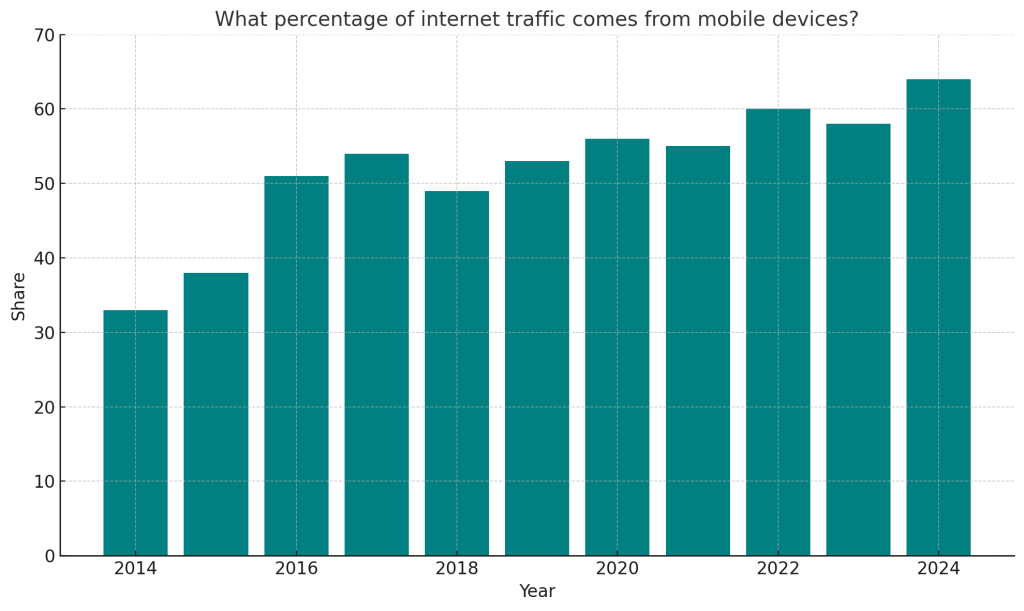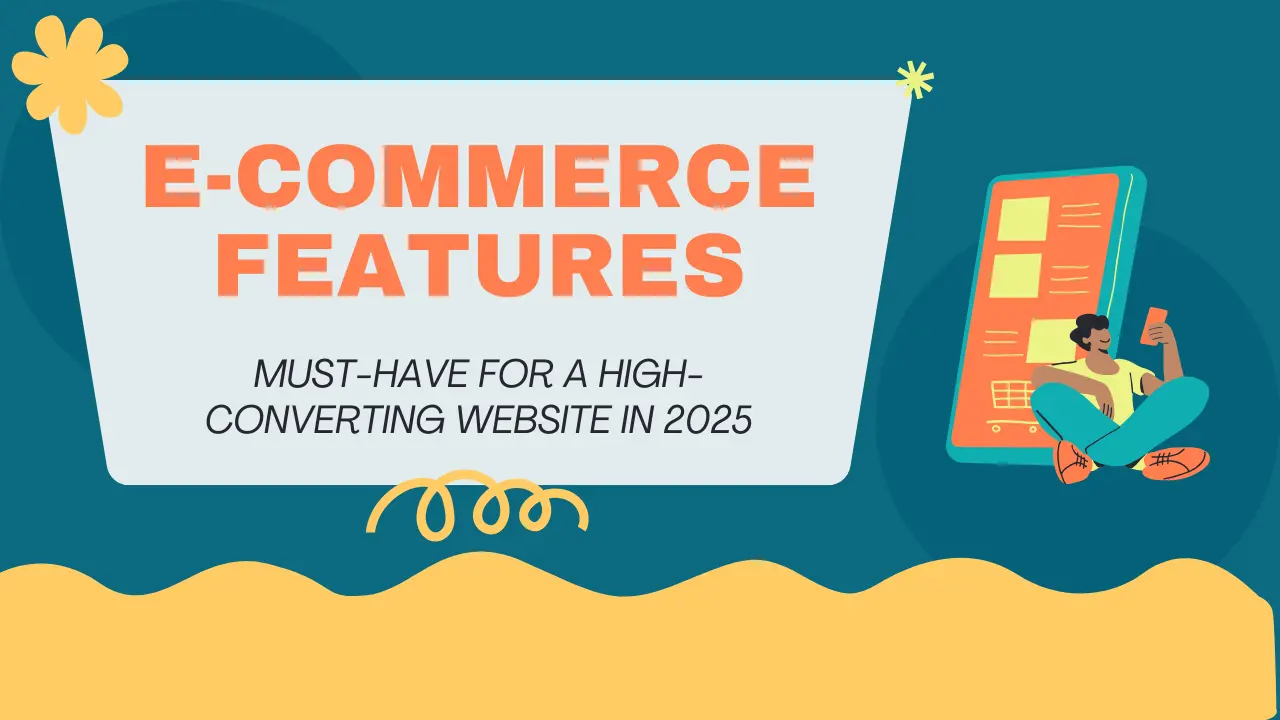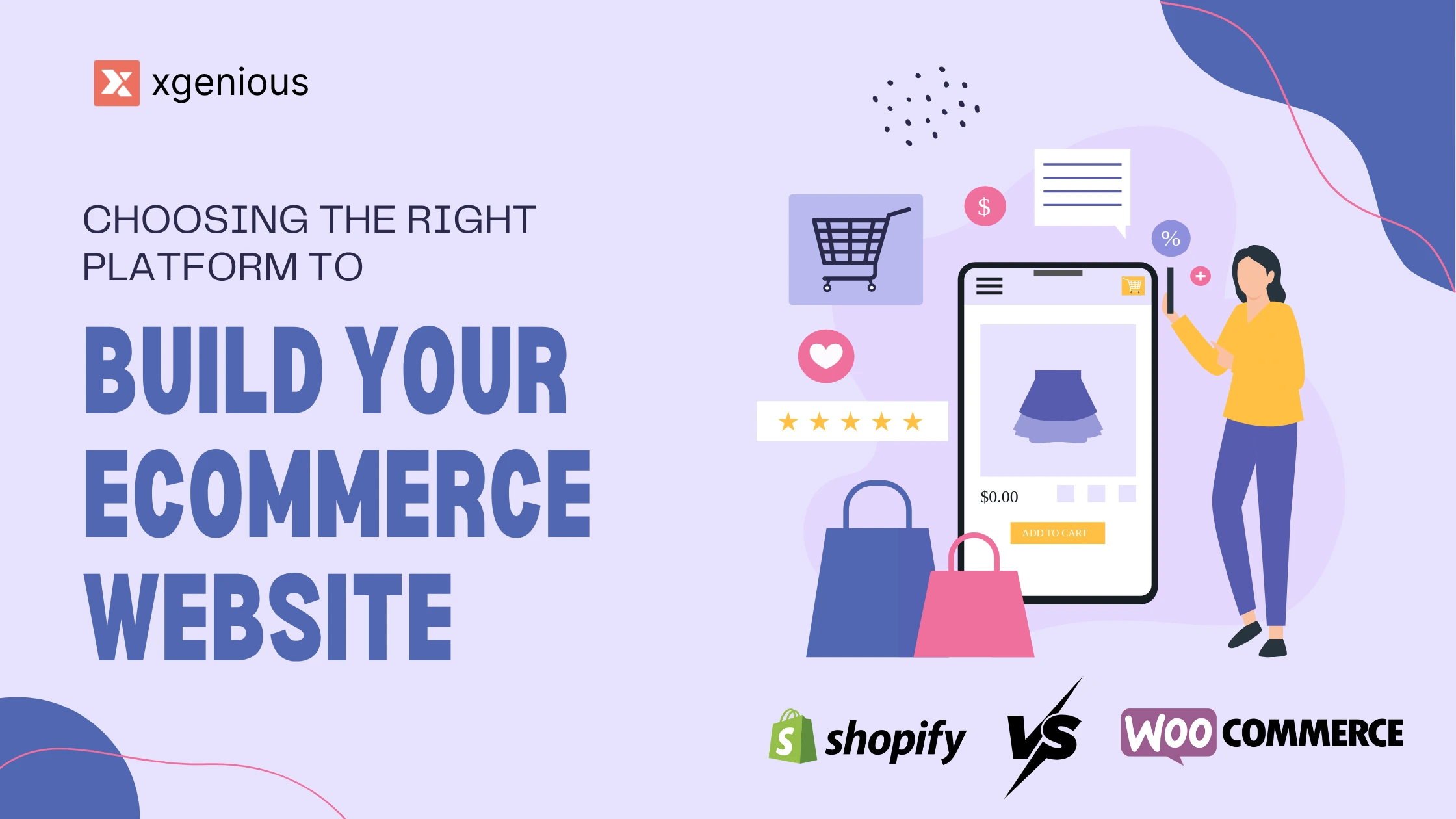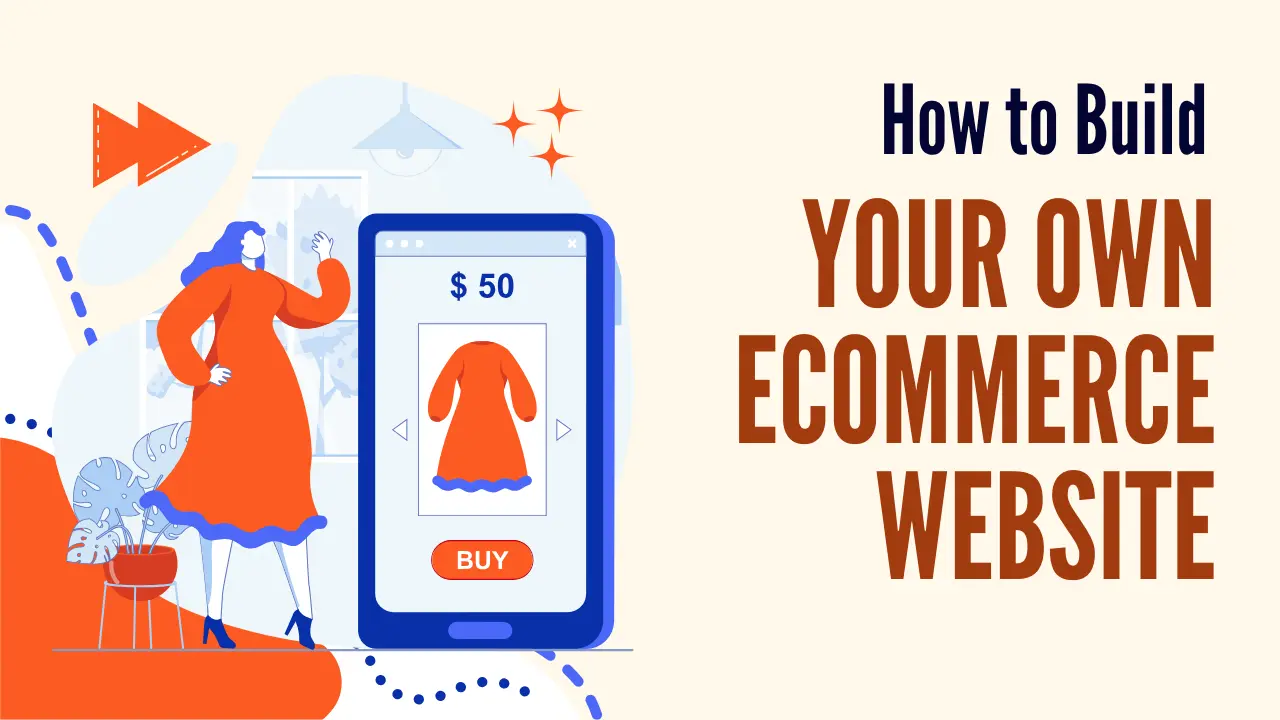If you’re wondering how to build an ecommerce website that actually converts, it’s not just about how it looks , it’s about what it offers. A beautiful ecommerce site means nothing if it frustrates users or fails to guide them smoothly from product discovery to checkout. In today’s hyper-competitive market, having the right ecommerce website features is what truly drives success.
From fast loading times to intuitive navigation and secure payment options, today’s online shoppers expect more. Whether you’re building from scratch or improving an existing store, this guide covers the must-have features every modern ecommerce website needs to attract, engage, and convert customers.
1. Mobile-Responsive Design

If you’re learning how to build an ecommerce website, one of the first things to get right is mobile responsiveness. With over 70% of ecommerce traffic now coming from mobile devices, your online store must be designed to work flawlessly across all screen sizes, smartphones, tablets, and desktops.
A mobile-responsive ecommerce website automatically adapts its layout, buttons, images, and text based on the user’s device. This ensures that customers can browse products, add items to their cart, and complete purchases without pinching, zooming, or unnecessary scrolling.
Responsive design is also a major factor in Google’s mobile-first indexing, meaning your mobile site experience directly impacts your SEO rankings. Poor mobile usability can lead to high bounce rates and lost sales no matter how good your products are.
If you’re serious about building a modern, high-converting ecommerce website, mobile responsiveness is not optional . it’s the foundation for user trust, retention, and revenue.
2. Secure Payment Gateway Integration
When it comes to learning how to build an ecommerce website that earns trust and drives sales, secure payment integration is absolutely essential. Shoppers are handing over sensitive data , credit card details, billing addresses, and more and they need to feel confident that their information is protected.
Your ecommerce website must integrate with reliable and widely-recognized payment gateways such as Stripe, PayPal, Razorpay, or local providers suited to your target market. These platforms offer built-in fraud protection, encrypted transactions, and support for various payment methods like cards, wallets, and UPI.
Additionally, your site should be equipped with an SSL certificate to encrypt all data exchanged between users and your server. Ensuring PCI compliance (Payment Card Industry Data Security Standard) adds another layer of trust and credibility to your store.
A secure checkout process not only protects your business from legal and financial risks. it also reduces cart abandonment rates and increases conversion. If your goal is to build a scalable and trusted ecommerce platform, security should be integrated from day one.
3. Fast Page Load Speed
One of the most overlooked, yet critical aspects when figuring out how to build an ecommerce website is performance. Specifically, your site must load fast. In fact, studies show that a 1-second delay in page load time can reduce conversions by up to 7%. In the ecommerce world, speed equals sales.
Fast-loading websites keep users engaged, reduce bounce rates, and lead to better SEO rankings. Google has made it clear that page speed is a ranking factor, especially on mobile devices. A slow ecommerce site frustrates visitors and makes them less likely to trust your brand or complete a purchase.
To improve load times:
- Optimize and compress images without losing quality
- Use caching strategies to reduce server requests
- Minify CSS, JavaScript, and HTML files
- Choose a reliable hosting provider with scalable infrastructure
- Consider using a Content Delivery Network (CDN) to serve static files faster
If your goal is to build a high-performing ecommerce website that converts visitors into buyers, speed isn’t optional. it’s part of your competitive advantage.
4. Advanced Search and Filtering Options
If you’re serious about learning how to build an ecommerce website that delivers a smooth and satisfying user experience, then you must prioritize advanced search and filtering capabilities. As your product catalog grows, users need quick ways to find exactly what they’re looking for or they’ll bounce.
A powerful onsite search function should support:
- Autocomplete suggestions
- Keyword recognition (e.g., product name, SKU, category)
- Spelling tolerance and synonyms
Alongside that, smart filtering allows users to narrow down products based on attributes like:
- Size, color, price range
- Brand or vendor
- Ratings, availability, and promotions
Well-implemented filters reduce decision fatigue and improve product discoverability. especially for fashion, electronics, or multi-category stores. This leads to better engagement and higher conversion rates.
For ecommerce websites handling a wide range of products, investing in intuitive search and dynamic filtering is essential. It’s one of the key elements that separates a basic online store from a conversion-optimized shopping experience.
5. Seamless Checkout Experience
One of the most critical steps when learning how to build an ecommerce website that converts is optimizing the checkout process. No matter how attractive your site is or how many products a customer adds to their cart. if the checkout is clunky, confusing, or too long, they’ll abandon it.
A seamless checkout experience minimizes friction and builds buyer confidence. Here’s what it should include:
- Guest checkout option (no forced account creation)
- One-page or multi-step progress indicators
- Auto-filled fields and address lookup integrations
- Clearly displayed shipping and tax costs
- Support for multiple payment methods
- Order summary and editable cart before final confirmation
According to Baymard Institute, the average cart abandonment rate is nearly 70%, with complex checkout being one of the main reasons. By streamlining your checkout flow, you not only reduce abandonment. you also increase customer satisfaction and repeat purchases.
If you’re building an ecommerce website from the ground up, plan your checkout UX carefully. A fast, clean, and intuitive checkout can significantly boost your revenue without any additional traffic or marketing.
6. Real-Time Inventory Management
If you’re planning how to build an ecommerce website that scales efficiently and avoids operational headaches, real-time inventory management is non-negotiable. Customers expect accurate stock availability and showing “out of stock” after a purchase attempt is one of the fastest ways to lose trust.
Real-time inventory syncing ensures that your product quantities are always up to date across:
- Product pages
- Cart and checkout
- Admin dashboard
- Third-party marketplaces (if integrated)
This feature becomes even more important if you:
- Sell across multiple warehouses or physical stores
- Run flash sales or time-sensitive campaigns
- Offer limited stock, exclusive items, or bundled products
Without real-time updates, you risk overselling, issuing unnecessary refunds, and damaging your brand’s reliability. For growing ecommerce businesses, integrating inventory tracking with automated alerts, low-stock notifications, and supplier restocking workflows helps you stay ahead and maintain a smooth customer experience. This becomes especially crucial when managing returns and refunds efficiently learn how to optimize this process in our guide on handling returns and refunds in e-commerce. When building your ecommerce site, ensure your platform or tech stack supports real-time inventory syncing from day one. it’s essential for long-term growth and customer satisfaction.
7. Product Variants and Customization
When exploring how to build an ecommerce website that caters to diverse customer needs, product variation support is a key feature you can’t ignore. Shoppers want flexibility. whether it’s choosing the right size, color, material, or configuration and your store should make that experience simple and seamless.
Your ecommerce platform should support:
- Multiple variants under a single product (e.g., size and color for clothing)
- Dynamic pricing based on selections (e.g., different prices for different weights or bundles)
- Real-time stock visibility for each variant
- Visual previews that update based on the selected option (e.g., change product image on color selection)
For some niches like personalized gifts, engraving services, or build-your-own products, custom input fields (text boxes, dropdowns, checklists) may also be required during product selection.
Offering well-structured product variants improves user experience and reduces confusion. It also helps you avoid cluttering your catalog with dozens of near-identical product pages keeping your store clean, user-friendly, and optimized for conversions.
If you’re building a serious ecommerce business, handling product customization the right way is a feature that pays off in customer satisfaction and reduced support requests.
8. Multiple Shipping Options and Calculators
When learning how to build an ecommerce website that meets customer expectations, shipping flexibility plays a major role. Today’s online shoppers expect to choose how and when they receive their orders. whether it’s standard shipping, express delivery, in-store pickup, or local courier.
Your ecommerce website should support:
- Multiple shipping methods based on speed, location, or carrier
- Real-time shipping rate calculators from providers like FedEx, DHL, UPS, or local couriers
- Free shipping thresholds to increase average order value
- Estimated delivery dates displayed clearly during checkout
- Support for international shipping, if applicable
A lack of clarity in shipping costs or options is one of the top reasons for cart abandonment. By showing transparent and accurate shipping charges early in the checkout process, you build trust and reduce buyer hesitation.
Additionally, integrating your shipping system with your inventory and order management ensures a smooth fulfillment process post-purchase.
If your goal is to build a high-performing ecommerce site, offering a range of shipping choices backed by automated calculations is key to reducing friction and boosting customer satisfaction.
9. Product Reviews and Ratings
One of the most effective ways to boost conversions while figuring out how to build an ecommerce website is by adding social proof and nothing builds trust faster than authentic product reviews and ratings.

Today’s shoppers rely heavily on reviews before making a purchase. In fact, studies show that over 90% of customers read reviews, and products with high ratings are far more likely to convert. Even a handful of honest reviews can make a new store feel credible and safe.
Your ecommerce site should support:
- Verified customer reviews (from real buyers only)
- Star rating systems (e.g., 1–5 stars)
- Text, image, or video review options
- Review filtering and sorting (e.g., most recent, highest rated)
- Ability for users to ask and answer questions on product pages
Make sure reviews are easy to submit and even easier to browse. Displaying recent reviews on product pages and homepages can further increase trust and guide hesitant buyers.
If you’re building an ecommerce website from scratch, plan for a review system from day one. it’s a long-term asset that helps both new and returning customers feel confident in their buying decisions.
10. Wishlist and Save for Later
As you explore how to build an ecommerce website that encourages repeat visits and long-term customer engagement, adding a wishlist or “save for later” feature becomes a powerful tool. Not every visitor is ready to buy immediately but that doesn’t mean they’re lost forever.
A wishlist allows users to:
- Bookmark favorite items for future consideration
- Create shopping lists (e.g., holiday gifts, wardrobe planning, etc.)
- Receive personalized alerts for price drops, restocks, or limited-time offers
- Share their wishlist with friends and family
This feature not only improves user experience, but also provides valuable behavioral data. You can use wishlisted items to personalize email campaigns, upsell complementary products, or run targeted ads.
“Save for later” functionality during checkout also reduces cart abandonment by letting users temporarily postpone their purchase without starting over later.
If you want to build an ecommerce website that fosters loyalty and drives recurring sales, enabling wishlists and product saving is an easy win that adds long-term value to your store.
11. User Account and Order History
When planning how to build an ecommerce website that keeps customers coming back, providing a well-designed user account dashboard is essential. Shoppers want more than just a one-time transaction they expect control, transparency, and convenience throughout their journey.
A user account should empower customers to:
- Track orders in real-time
- View order history, including invoices and shipping details
- Reorder past items with a single click
- Save and manage multiple shipping addresses
- Update personal details like email, password, and payment methods
- View saved items or wishlists
For your support team, a robust customer dashboard also reduces manual support tickets by allowing users to find answers on their own. This enhances the post-purchase experience and builds trust in your brand.
If you’re building an ecommerce website with long-term growth in mind, a personalized and intuitive user account system should be a core part of your functionality from the start not an afterthought.
12. Easy-to-Use Admin Dashboard
As you plan how to build an ecommerce website that you can manage efficiently over time, a powerful yet user-friendly admin dashboard is absolutely essential. It’s the control center of your entire business. where you manage orders, products, customers, and performance.
A well-designed admin panel should allow you to:
- Add, edit, or delete products easily
- Manage categories, stock levels, and pricing in bulk
- View and fulfill customer orders with tracking and status updates
- Create coupons, discounts, and promotional campaigns
- Access detailed analytics on sales, traffic, and customer behavior
- Manage customer support tickets or inquiries
- Set roles and permissions for your team or vendors
A clean, intuitive backend saves you countless hours and reduces the risk of human error. especially if you’re scaling quickly or managing multiple product lines.
If you’re serious about building an ecommerce site that runs smoothly without technical headaches, investing in an easy-to-navigate, secure, and scalable admin dashboard is just as important as the frontend experience.
13. SEO-Optimized URLs and Meta Tags
If you’re researching how to build an ecommerce website that gets consistent organic traffic, your SEO foundation must start with clean URLs and well-structured meta tags. These elements help search engines understand your content and help users find your products faster.
Here’s what you should implement from the start:
- Clean, keyword-rich URLs (e.g.,
/men-leather-walletinstead of/product?id=12345) - Unique and optimized meta titles for every product and page
- Compelling meta descriptions that improve click-through rates
- Header tags (H1, H2, H3) to structure content for readability and ranking
- Alt text for all images to improve accessibility and image SEO
- Canonical tags to avoid duplicate content penalties
- Schema markup (product, review, breadcrumb) for rich search results
But SEO doesn’t stop at just metadata internal linking plays a powerful role in how search engines crawl your site and how users navigate it.
👉 Read our complete guide on internal linking strategies for ecommerce websites to learn how to structure links for maximum SEO and conversion impact.
If you want your ecommerce website to be discoverable and rank for competitive keywords, SEO-optimized URLs, metadata, and internal linking should be built into your site structure from the very beginning.
14. Analytics and Conversion Tracking
If you’re serious about learning how to build an ecommerce website that doesn’t just look good but actually performs, then analytics and conversion tracking must be part of your setup from day one. You can’t improve what you don’t measure and in ecommerce, data is everything.
With the right tracking tools in place, you can:
- Understand where your traffic is coming from
- Monitor which products get the most views and sales
- Identify which traffic sources convert best (e.g., organic, paid, social)
- Track cart abandonment rates and checkout funnel drop-offs
- Analyze user behavior through heatmaps or session recordings
- Run A/B tests to improve conversion rates
Essential tools to integrate include:
- Google Analytics 4 (GA4)
- Facebook Pixel for ad retargeting
- Google Tag Manager for simplified script management
- Conversion tracking for specific goals like newsletter signups or purchases
- Ecommerce tracking to measure revenue, order value, and product performance
Without these insights, you’re essentially flying blind. With them, you can make data-backed decisions to scale your ecommerce store faster and more profitably.
If you’re building your ecommerce website with growth in mind, integrate analytics and tracking systems as part of your core launch checklist, not as a later add-on.
15. Customer Support Integration
If you’re learning how to build an ecommerce website that builds long-term trust, you can’t overlook customer support. Even the best-designed stores will face questions, delivery issues, or refund requests and how quickly and professionally you respond can make or break the customer relationship.
Modern ecommerce websites should integrate:
- Live chat support for real-time help during shopping
- Chatbots to handle FAQs and common queries instantly
- Support ticketing systems for post-sale issues or order concerns
- Email and contact forms for flexible communication
- Knowledge base or FAQ sections to empower self-service
Platforms like Thrivedesk, LiveChat, Zendesk, or custom Laravel-based systems can easily be embedded into your storefront.
By offering multiple support channels, you improve customer satisfaction, reduce cart abandonment (especially if users have last-minute questions), and create a more human shopping experience.
If you’re building an ecommerce store with the goal of creating a loyal customer base, strong support integration is just as important as the products you sell.
Wrap-Up: Your Features Are Your Foundation
Knowing how to build an ecommerce website is about more than launching a storefront. it’s about crafting a seamless, secure, and optimized experience from the first click to the final purchase.
Each of the features we’ve covered from mobile responsiveness and secure payments to powerful search, SEO, and customer support plays a vital role in attracting visitors, earning trust, and converting them into loyal customers.
The modern ecommerce landscape is competitive, but by building with these essentials, you position your store to not just survive but grow.
👉 Ready to start building? Don’t miss our complete step-by-step guide on how to build an ecommerce website
👉 And for better internal SEO, check out our detailed post on internal linking strategies for ecommerce websites
FAQ: Ecommerce Website Features
Can I launch my ecommerce website with just a few of these features?
Yes, but you risk lower conversions and customer satisfaction. Start lean but prioritize adding these features as you scale.
How do I know which features are essential for my product type?
Base it on your customer journey. For fashion, filtering and variants are key. For electronics, specs comparison and reviews are vital.
Which ecommerce platform supports all these features?
Laravel-based custom solutions (like SafeCart by Bytesed), Shopify, WooCommerce, and Magento all the top ecommerce platforms support these but flexibility varies.



